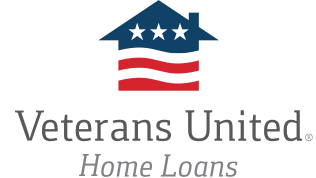VA Loan Rates
Understand how your rate is calculated and the factors that go into determining the VA Loan rate you receive, along with the advantages of VA loan rates.
Today's VA Loan Rates
Mortgage rates come from our lender, Veterans United Home Loans. VA loan rates change daily based on market conditions. See current VA loan rates for each VA loan type below.
| VA Loan Type | Interest Rate | APR | Points |
|---|---|---|---|
| 30-Year Fixed VA Purchase | 5.500% | 5.922% | 1.5630 ($4610.85) |
| 30-Year Fixed VA Jumbo Purchase | 5.500% | 5.861% | 0.8750 ($6707.32) |
| 30-Year VA Cash-Out Refinance | 6.125% | 6.430% | 0.1250 ($368.75) |
| 30-Year VA Cash-Out Jumbo Refinance | 5.625% | 5.955% | 0.5000 ($3832.76) |
| 30-Year Streamline (IRRRL) Refinance | 5.500% | 5.814% | 2.0000 ($5900.00) |
| 30-Year Streamline (IRRRL) Jumbo Refinance | 6.125% | 6.324% | 0.6250 ($4790.94) |
Just like conventional loans, VA loans can come as fixed- or adjustable-rate mortgages (ARMs) and last up to 30 years. Before deciding to finance a home with a VA loan, learn about the different types of loans available so you know what you’d like before you talk to a VA-approved lender.
Fixed vs. Adjustable Interest Rates
When military homeowners decide to get a fixed interest rate, that’s what they’ll get: an interest rate that is set. Fixed interest rates for VA loans are similar to, but usually lower than, traditional mortgages. The VA’s guarantee for lenders of up to 25% of each loan often allows lenders to offer VA loan borrowers lower rates.
Generally speaking, fixed-rate mortgages are the most popular option — both with VA borrowers and borrowers at large. Fixed interest rates equal a consistent and reliable payment across the entire loan term, making them easy to budget and plan for.
Adjustable-rate mortgages are a little more complicated. They typically come with lower rates at the beginning of the loan, and then the rate can adjust — often upward over time. This sends the monthly payment up as well. If you know you’ll only be in the home a short amount of time (say a PCS is on the horizon), an adjustable-rate mortgage can be a smart choice, but it’s best to talk through your options with a licensed loan officer.
VA Loan Rate FAQ
What is the VA loan interest rate?
The interest rate is what you’ll pay annually to borrow the loan. So if you take out a VA loan for $200,000 at a 3% rate, you’d pay $6,000 across the year (3% of 200,000). When you get a quote for a VA loan, you’ll also be given an estimated APR — or annual percentage rate. This is the total annual cost of the loan, including the interest and any other fees you’ll owe.
Who sets VA loan rates?
VA home loan rates are set by each individual mortgage lender. They take into account the overall economy, market conditions, investment activity, and your individual risk profile when setting your rate. You can improve the rate you get by increasing your credit score, shopping around for your lender, and offering a down payment.
What determines my VA loan rate?
There are lots of factors that influence your unique VA loan interest rate, including the larger economy, inflation, and more. Your credit score, payment history (on loans and other debts, for example), your down payment, and your debt-to-income ratio also factor in. Higher credit scores and larger down payments typically qualify you for a lower interest rate.
How do VA loan rates compare with the rest of the market?
VA loan rates are generally the same as or slightly lower than other mortgage products out there. According to mortgage technology provider Ellie Mae, interest rates on 30-year VA loans were about 0.25% lower in November 2020 than on other loan types.
Are VA refinance rates different from VA purchase rates?
Refinance rates are sometimes lower than purchase ones, as they usually involve lower-balance loans. When a lender has to loan you less money, it reduces the risk they take on when issuing your mortgage. The lower the risk, the lower your rate typically goes.
How do you lock in your VA loan interest rate?
Once your application has been processed, you can opt to lock your rate at any time. Just let your loan officer know you’re ready to solidify that rate, and you’ll be able to do so. In most cases, rate locks last at least 30 days. Many lenders offer extended lock periods anywhere from 60 to 90 days, though these may come at a fee.


